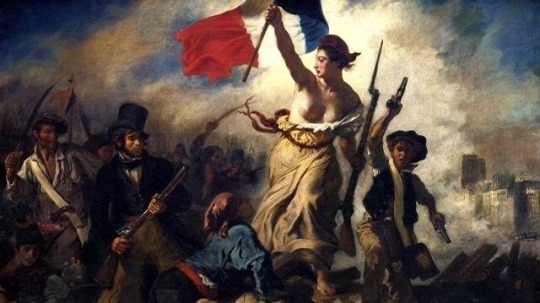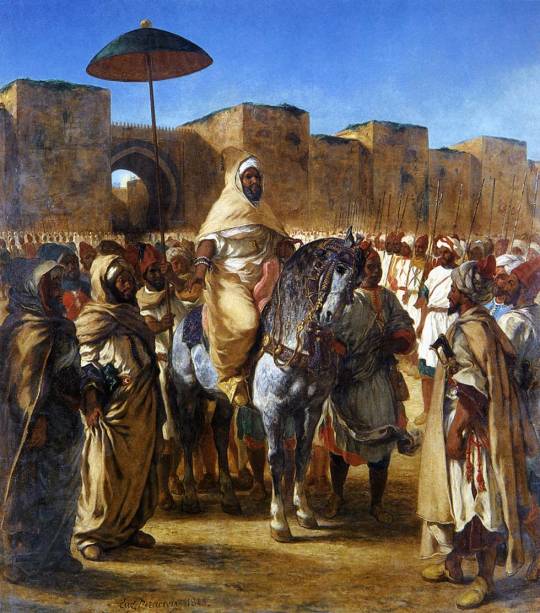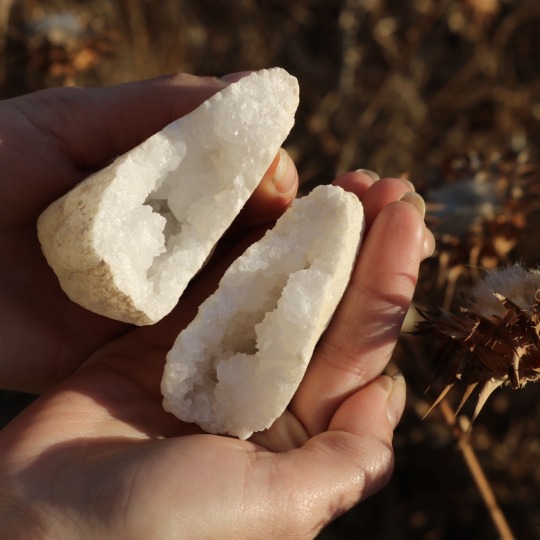perfil dedicado a resenhas, notícias e curiosidades sobre museologia, história, antropologia, sociologia e afins!
Don't wanna be here? Send us removal request.
Text


life imitating art.
History is being written. October, 2019.
350 notes
·
View notes
Photo

Museu de Arte do Rio Grande do Sul (by t-hestrals)
80 notes
·
View notes
Photo

Muley Abd-ar-Rhaman, The Sultan of Morocco, leaving his Palace of Meknes with his entourage, 1845, Eugène Delacroix
Medium: oil,canvas
10 notes
·
View notes
Photo

Comb, mid-late 1800s, Cleveland Museum of Art: African Art
Chokwe women inserted finely decorated combs and pins in their hair to signal rank and wealth. Here, as among neighboring peoples, coiffures reveal regional and temporal fashions and trends. Certain styles are exclusive to chiefs and other dignitaries. In addition to being a sign of beauty and good health, a well-groomed hairdo also suggests that the wearer relies on the help of others in its creation. Size: Overall: 13.3 x 8 x 1.4 cm (5 ¼ x 3 1/8 x 9/16 in.) Medium: wood, beads
https://clevelandart.org/art/1915.453
17 notes
·
View notes
Text

Look at this beautiful Quartz geode! Now that’s what I’m talking about ✨✨
307 notes
·
View notes
Text
Museu Júlio de Castilhos
O Museu Júlio de Castilhos foifundado em 1903. Há em registros que sua primeira exposição foi sobre recursos minerais e objetos oriundos da cultura indígena, isso antes da oficialização do museu como uma instituição de fato. O museu herda o nome de uma figura histórica no Rio Grande do Sul, o jornalista e co-fundador do Partido Republicano Riograndense, Júlio Prates de Castilhos, que foi um dos grandes responsáveis por espalhar a palavra positivista em sua época. O museu conta com acervo histórico, contanto a história da Revolução Farroupilha, da reigão das Missões e dos indígenas gaúchos - algo que causa certa polêmica, uma vez que, até que ponto expor objetos que possam ser considerados sagrados por um povo não é uma forma de exploração? Questões impoirtantes a serem feitas - e de ciências naturais.
1 note
·
View note
Text
Museu Paranaense
Fundado em 1876 por Agostinho de Leão e José Cândido da Silva, o Museu Paranaense começou como uma instituição privada, mas que 6 anos depois torna-se pública. A instituição, assim como as outras também citadas aqui no blog, também serviu para criar a identidade nacional, todavia, mais focada na identidade paranaense. O museu tinha como ramo: Arqueologia, Etnologia e História. O museu também tinha como função exaltar o Paraná, sua fauna e flora, cultura e história.
1 note
·
View note
Text
O Museo Nacional de la Inmigración
Maine Lopes escreve no livro de mesmo nome do título do post sobre o museu de imigrantes da Argentina. Nele, ela comenta sobre a história da criação do museu, o que faz um órgao do gorverno ou grupo de pessoas querer criar um museu de imigrantes e sobre a relação das pessoas com o museu.
O museu é importante para contar a história do povo argentino, e também da América Latina, uma vez que o continente recebeu imigrantes de todos os continentes. Todavia, no museu, há um destaque maior para os imigrantes europeus, a autora inclusive destaca e problemtiza essa questão. É também de grande relevância, dentro da obra, a relação das pessoas com o museu. Durante cerca de um capítulo e meio a autora disserta sobre mensagens deixadas pelos visitantes do museu que comentaram, majoritariamente, sobre suas narrativas com a instituição. A maioria delas falava em se identificar com os imigrantes, uma vez que a maioria era de familiares dos visitantes, senrtir-se re representado ou para conhecer o museu. Eu, sinceramente, achei uma leitura meio pesada, meio repetitiva, mas no geral é bem interessante!
1 note
·
View note
Photo

O presidente Getúlio Vargas escreve no gabinete na década de 1940
30 notes
·
View notes
Text
Museu Histórico Nacional
Assim como outros museus já citados aqui no blog, o Museu Histórico Nacional, fundado em 1922, também foi feito nos moldes europeus e seguiu essa tendência por quase meio século, na administração de Gustavo Barroso, cearense, museólogo, romancista e um grande saudosista - um baita retrógrado, por assim dizer - do Estado Imperial. O museu fazia referência a antiga aristocracia brasileira e nomes do militarismo - tinham salas com nomes de personalidades como Getúlio Vargas. O Museu Histórico Nacional queria manter essa reputação de soberania nacional e mostrar uma elite nobre como algo de grande influência na memória.
1 note
·
View note
Text
First Museum, ever!
I got a little blue this past week, not just about the state of the world but how my job will ever make a good impact on people’s life. I was luck though, because I manage to recall a distant memory from the first time I ever visited a museum.

Check out this big boy!! hahaha I mean, I know there are bigger museums out there. But can you imagine seeing this as a 7 years old? My school had a field trip where we left our small country town and went to the big city, São Paulo. There we visited Museu Paulista (pic above) and the planetary!
To this day I can remember the brown shades inside the museum. Everything felt old and precious. Things seemed alive, weirdly enough. I chose this pic not because its the most accurate depiction of the museum, but because it has that gold sparkle that I saw as a child.
Anyway, my point is that even if work can sometimes become too much, after all things aren’t as golden as I’d love them to be, it’s nice to remember the hidden magic that museums are capable of. The 7 year old me felt important walking around those corridors, almost like a princess (even when I got lost hehehe). So what I am doing, what we are doing, will also make someone, at some point in time, feel important and amazing for a couple of hours. And that matters a lot!
Nowadays, of course, I realize how fortunate I was for being able to even visit a museum and getting in contact with a part of my country’s history. Many people aren’t capable of that, and we must fight for everyone’s right to preserve and acess history and memory. But that’s a topic for another post!
I hope you are well and that your work also makes you feel amazing sometimes! :D
23 notes
·
View notes
Text
O Museu Paulista
O Museu Paulista foi fundado em 1890, e começou como um museu de história natural. O primeiro diretor do museu foi Hermann von Ihering, um zoólogo e naturalista alemão. Ihering foi importante noprocesso de solidificação do cenário científico brasileiro, mas o que mudou o patamar do museu foi o diretor seguinte à ele, Affonso de Taunay, foi o principal responsável por transformar o Museu Paulista em um museu histórico. Ele queria deixar o museu nos trinques para o aniversário de cem anos da Independência do Brasil, com o museu já 100% hstórico, tendo seções que mostravam a história do país, objetos históricos e afins. Taunay foi extremamente importante para estabelecer a história como temática de um dos principais museus do país, algo que ia totalmente contra as tendências da época
1 note
·
View note
Text
Brazil’s indigenous people swear to fight for Amazon ‘to last drop of blood’

Members of Brazil’s Mura indigenous tribe painted their bodies with orange-red paint and took up long bows and clubs as they headed into the jungle this week, prepared for battle. Their enemy? The deforestation and destruction of their home, the Amazon rainforest.
There are more than 18,000 Mura that live in Amazonas state, the largest and best-preserved state in Brazil’s Amazon rainforest, according to data compiled by the non-government organization Instituto Socioambiental.
Members of the tribe showed Reuters an area the size of several football fields near their village, where the forest had been cleared away, leaving a broad dirt hole in the ground pockmarked by the treads of heavy machinery.
“With each passing day, we see the destruction advance: deforestation, invasion, logging,” said Handerch Wakana Mura, one of several leaders of a tribal clan of more than 60 people.
“We are sad because the forest is dying at every moment. We feel the climate changing and the world needs the forest.”
Indeed, Amazon deforestation has surged 67% in the first seven months of the year from the same period a year ago, according to Brazil space research agency INPE.
This week, the agency said forest fires were up more than 80% in the country year-to-date, hitting their highest point since at least 2013.
Everywhere in the region around the Mura village, pockets of fire were raging.
Continue reading.
4K notes
·
View notes
Text
Brazil: Amazon land defender killed by illegal loggers

A young indigenous land defender has been shot dead and another wounded by illegal loggers in Brazil's Amazon.
Paulo Paulino Guajajara was reportedly attacked and shot in the head while hunting on Friday inside the Arariboia reservation in Maranhao state.
He was a member of Guardians of the Forest, a group formed to combat logging gangs in the area.
The killing increases concerns about escalating violence against Amazon forest protectors.
"I'm scared at times, but we have to lift up our heads and act. We are here fighting," he told Reuters news agency this year.
"There is so much destruction of nature happening, good trees with wood as hard as steel being cut down and taken away," he added.
"We have to preserve this life for our children's future."
Continue reading.
1K notes
·
View notes


